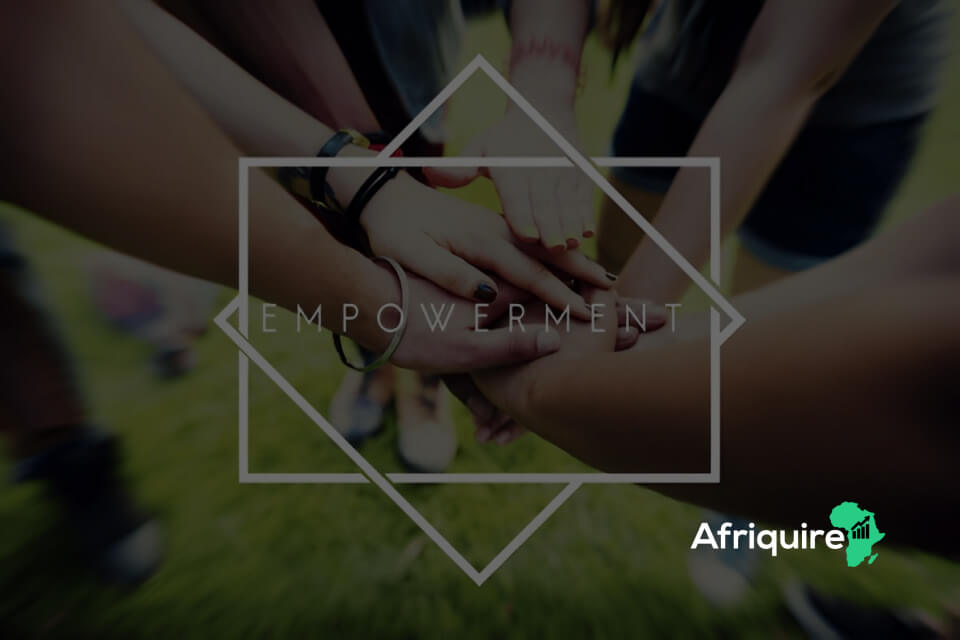Introduction
Youth empowerment is shaping Africa’s future in powerful ways. All over the continent, many programmes are working hard to help young people build skills, gain confidence, and find success in school, business, and leadership. But here’s an important question: How do we know if these programmes are helping?
In this article, we’ll look at why measuring the success of youth empowerment matters, what’s happening in Africa today, what’s working, what needs to change, and how these programmes are truly helping young people.
Importance of Measuring Youth Empowerment Outcomes
It’s not enough to just count how many people joined a training or went to a workshop. Instead, we need to see how these programmes actually change lives. Do they help young people get jobs? Do they boost confidence or improve leadership skills? These are the things we must find out.
Also, donors and governments want to know if their support is making a real difference. When we measure outcomes clearly, it becomes easier to get more funding and grow the programmes.
Even more, good measurement helps leaders learn what works best so they can keep improving and supporting young people in ways that really matter.
Overview of Youth Empowerment Efforts in Africa
Africa has one of the youngest populations in the world. In fact, more than 60% of people are under 25 years old. So, it’s easy to see why youth empowerment is so important. Many governments, NGOs, and companies are already working on this.
For example, some programmes focus on education. Others teach young people how to start a business, build digital skills, or become community leaders. Projects like the African Youth Empowerment Fund help young entrepreneurs with training and funding. Some programmes also help youths get better access to the internet and technology.
These programmes are doing a lot of good. However, since there are so many of them, it can be hard to track how well they are working unless there is a clear way to measure progress.
Why Accurate Evaluation is Necessary for Long-term Impact
When we check the results of youth programmes carefully, we can see which ones bring lasting change. For example, do the programmes help young people stay employed? Are they still involved in their communities after the programme ends? These answers can only come from good evaluation.
Also, if we don’t evaluate properly, some programmes may waste time and resources. On the other hand, programmes that are doing great work might not grow because no one sees their success. That’s why measuring success is not just helpful, it’s necessary.
Besides, governments and funders want clear data before they invest. They want to know their support is leading to strong, positive results. When we show real impact with numbers and stories, it helps bring more funding and support for youth empowerment in Africa.

Key Metrics for Evaluating Youth Empowerment Initiatives
Youth empowerment helps young people learn new skills, find jobs, and take part in their communities. But how can we tell if these programs are really helping? That’s where key metrics come in. These are the main things we look at to see if a youth empowerment program is working well.
Employment and Entrepreneurship Rates
First of all, we need to check how many young people get jobs or start their own businesses after joining a program. If many of them find work or build a business, it shows the program is helping them become independent. This also means they can support themselves and even help others by creating more jobs.
As more youth work and run businesses, the economy grows stronger. This is a clear sign that youth empowerment is shaping Africa’s future in a good way.
Skills Acquisition and Educational Attainment
Next, we look at what new skills young people are learning. These could include things like computer literacy, technical skills, or financial knowledge.
Also, we check how many young people finish school or complete training. The more skills and education they gain, the more ready they are for the job market or to start a business.
This helps prove that the program is useful. It also helps attract more funding from groups that want to support programs that build strong futures for young people.
Civic Engagement and Leadership Participation
Now let’s talk about leadership. A good youth program should help young people become more active in their communities. We can check how many join youth groups, volunteer, or even help in local government projects. When young people speak up and take part in decisions, they become strong leaders. This also helps make the community better for everyone. In fact, this is one of the best ways youth can create real social change.
Improved Wellbeing and Social Inclusion
Finally, youth empowerment also means improving young people’s overall well-being. A great program helps them feel more confident, healthy, and included. We can measure things like better mental health, stronger self-esteem, and how well they connect with others.
Also, it’s important that all young people, including girls, those with disabilities, and those in rural areas, feel included and supported. When young people feel good about themselves and their future, the whole community wins.
To sum it up, measuring youth empowerment is not just about counting numbers. It’s about seeing real growth in jobs, skills, leadership, and wellbeing. These key areas help us know which programs are working and where to improve.

Tools and Methods for Impact Assessment
Knowing if youth empowerment programs in Africa are really working is very important. That’s where impact assessment comes in. It means checking how well a program is doing and what changes it is making. Let’s explore some of the best tools and methods used to measure this impact.
Surveys, Interviews, and Focus Group Discussions
To begin with, one of the easiest ways to measure impact is by asking young people directly. This is done through surveys, interviews, and focus group discussions.
Surveys are simple forms with questions about the youth’s experience in the program. For example, they might ask, “Did you learn any new skills?” or “Do you feel more confident now?” These answers give useful information about what the program is doing well and where it needs to improve.
Interviews go a step further. They are one-on-one chats where youth can share their personal stories. This helps organisations understand their journey better.
Focus group discussions involve a small group of young people talking together. They share their ideas, opinions, and feelings about the program. This gives honest feedback from many voices at once.
Nowadays, many of these surveys are done on mobile phones. This is because phones are fast, cheap, and easy to use. They help organisations reach more young people, even those living in faraway villages.
Monitoring and Evaluation (M&E) Frameworks
Next, we have Monitoring and Evaluation frameworks, also known as M&E. These are organised plans that help track the program from beginning to end.
Monitoring means checking the program regularly. It answers questions like, “Are we doing what we planned?” or “Are the youth attending the training sessions?”
Evaluation looks at the big picture. It helps find out, “Did the program work?” or “Did it help the youth find jobs or start businesses?”
For example, a program may track how many young people finished their training, found a job, or went back to school. These facts and numbers help show if the program is truly helpful.
One good example is the Youth Empowerment Program (YEP) in Africa. It used M&E to see how many youth got jobs after training. That way, the team could improve the program and share the results with people who support it.
Longitudinal Studies and Case Tracking
Another smart method is using long-term studies. These follow the same group of youth for many years. They check in from time to time to see how their lives are changing. This is helpful because it shows whether the program has lasting results.
For example, a study might ask, “Where is this young person five years after the program?” or “Are they still using the skills they learned?”
Along with this, case tracking is also used. This means following a single person’s story closely. It shows what helped them succeed and what problems they faced. These stories give deep insight and can help future programs do better.
Challenges in Measuring Youth Empowerment Success
Limited Access to Reliable Data
First, many programs take place in rural or remote areas where collecting data is hard. Sometimes, there’s no internet or reliable electricity. Even when data is collected, it might be old, incomplete, or missing important details. Without clear and up-to-date information, it’s difficult to track how much progress is being made.
For example, surveys like the Demographic and Health Surveys (DHS) try to collect data across Africa. However, they don’t always happen often or cover everything we need.
So, organisations and governments can struggle to understand how well their youth empowerment efforts are working.
Short-term Funding Cycles
Next, most programs don’t get funding for very long, sometimes only one or two years. That’s a problem because real change takes time. Teaching young people new skills, building their confidence, and creating opportunities for them can take several years.
When programs end too soon, it’s hard to know if the change will last. Many times, organisations focus on quick results instead of long-term success because their funders expect fast outcomes. But lasting youth empowerment takes patience, planning, and ongoing support.
Cultural and Regional Differences in Youth Experiences
Another challenge is that Africa is very diverse. Young people in one area can have very different lives compared to those in another.
For instance, youth living in a busy city like Lagos might use smartphones every day. Meanwhile, youth in a small village in Tanzania may not even have regular access to electricity. Because of these differences, it’s hard to measure youth empowerment in the same way everywhere. What works in one place might not work in another.
That’s why programs need to understand local cultures, values, and needs. If not, they risk missing what really matters.
Using Data to Improve Youth Empowerment Programs
When we track the right things, we can improve programs, fix problems, and make sure each one truly changes lives. Let’s break down how data turns great ideas into real results for Africa’s youth.
Adapting Programs Based on Evidence
First, data helps us make better decisions. When we know what young people actually need, we can adjust programs quickly. For example:
- In Uganda, a youth program called DREAMS made changes based on feedback and raised vocational training completion to 89%.
- Health programs started adding mental health support because the data showed many young people needed it.
- In rural areas with poor internet, digital skills projects added mobile learning, making it easier for more youth to take part.
So, when we use numbers like job placements, skill tests, or wellbeing reports, we make programs more useful. That’s how we shape the role of youth empowerment in Africa’s future.
Identifying Gaps and Scaling Successful Models
Next, data helps us find what’s missing and shows us what works best:
- In Nigeria, data showed that youth unemployment was over 21%. Because of that, more programs started focusing on tech and entrepreneurship skills.
- In Sub-Saharan Africa, a program called Microsoft YEP grew bigger after data showed 72% of its graduates got jobs or continued their studies.
- In some places, data showed that agri-tech programs didn’t get enough money. So now, more funding opportunities for youth empowerment are going to those areas.
When organisations, governments, and donors share data, it’s easier to grow what’s working. A great example: In South Africa, a youth project in the retail sector created over 100 jobs by copying a field-marketing program that was already successful.
Engaging Youth in Feedback and Decision-making Processes
Also, the most powerful programs are the ones where youth get to speak up. That’s because young people know what they need. Here’s how smart programs do it:
- Include youth advisory boards to co-design projects, ensuring solutions match real needs.
- Use mobile surveys for real-time feedback, like apps tracking mental health or skill development.
- Host community workshops where young people prioritize goals (e.g., “Should we focus on coding or agribusiness?”).
When youth are part of the decision-making, the impact is bigger. In Kenya, young women helped lead anti-violence programs, and it reduced local conflicts by 40%. That’s an example of real change!

Frequently Asked Questions (FAQs)
1. What is youth empowerment?
Youth empowerment means helping young people build confidence, learn useful skills, and find chances to grow.
2. How do we know if a youth empowerment program is working?
We check how many young people get new skills, find jobs, start their own businesses, or become more active in their communities after the program ends.
3. Why should young people be involved in these programs?
When young people take part in planning and making decisions, they feel more responsible. This helps the program work better and have a longer-lasting impact.
4. Why is education important for youth empowerment? Education gives young people the tools they need to get jobs, build careers, or even start their own businesses. It’s a big part of becoming independent.
5. How does youth empowerment help society?
Empowered youth often create jobs, lead projects, and solve problems in their communities.
Conclusion
In the end, knowing how well youth empowerment programs are doing is very important. It helps us improve the programs and give young people better support. When we measure progress clearly, we can also show others that the program is making a real difference. This often brings more money and support from funders. More funding means more opportunities for young people across Africa. It also means stronger programs and better outcomes. Simply put, when we measure well, we build better futures.



